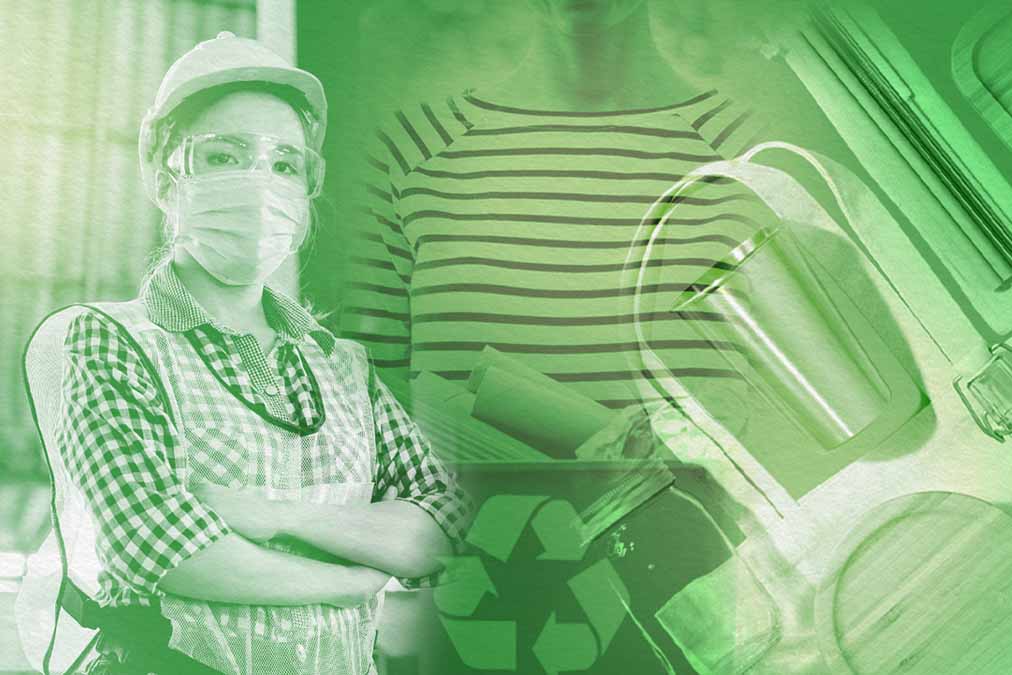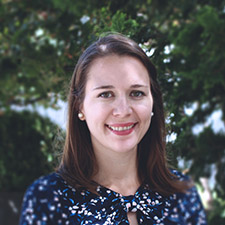
In this month’s edition of “Women in Circularity” we meet Olga Kachook of GreenBlue.
A warm welcome back to “Women in Circularity,” where we shine a light on women moving us toward a circular economy. This month, I connected with a sustainability professional who works to make green materials even better: Olga Kachook. Olga is the director of innovation for GreenBlue, an environmental nonprofit dedicated to empowering stakeholders to promote a more sustainable materials economy. She has over 10 years of experience in waste reduction and sustainability initiatives.
Was there a significant moment in your life that led to your decision to pursue a career in sustainable materials management?

Olga Kachook
I have always had a strong interest in materials because they are so visible, unlike energy, and the organized nerd in me enjoys making sure everything is in its proper place. I started my career in environmental consulting at Cascadia Consulting Group, where we would often do waste audits or material sorting for clients. Seeing all the materials (food, packaging, metals) that end up in the wrong stream because of insufficient infrastructure, confusing labeling, lack of consumer awareness, or missing policy made me want to work upstream with companies on their products and packaging.
How does your work help stakeholders, some of whom are already leading in this space, hit their sustainability targets?
Many companies have set sustainable packaging goals, but there are so many different competing priorities and options it can be hard to understand the complexities of various solutions. A lot of my work has focused on helping companies navigate these complexities – I have researched, developed and led guidance on compostable packaging, reusable packaging and design for food waste prevention. One theme across all of these solutions is that there are often key myths that need to be unpacked. It’s not just about choosing a different material or piloting reusables; companies need to make sure they are also supporting the bigger system, like collection infrastructure or return rates.
Can you tell us about a serendipitous outcome from a recent project?
In 2020, I created a dataset of composting facility locations and what types of materials they accept, and a second dataset exploring which of the top U.S. cities have access to residential composting programs. I call it my ‘pandemic project.’ It required a lot of tedious data mining, which was strangely cathartic at the time. We published the results for public use on Tableau, which allows you to create some fun visualizations of the data. Since then, the composting facilities map has had over 7,600 views and the urban composting access map has had over 7,200 views. I would have never guessed that so many people wanted to know about where to compost!
What is the bioeconomy and how does it complement the circular economy?
I recently wrote an article on the bioeconomy, which is the twin of the circular economy but for biological materials such as food and plants. Just like the circular economy, it focuses on making sure resources are kept in play for as long as possible, rather than sent to landfills. The concept was widely introduced in the 2002 book “Cradle to Cradle” by Michael Braungart and William McDonough, with “biological” nutrients and “technical” materials circulating through a system of cycles that many in the sustainability space will recognize as the well-known butterfly diagram. While plastic waste has been getting a lot of attention recently, we can’t forget that we’re also sending massive amounts of food waste to landfills. There is a huge opportunity to tackle food waste and packaging holistically and the bioeconomy framework helps us see those connections through a different lens.
Is there an environmental book that gives you hope for a greener future?
Yes, that would be “The Ministry for the Future” by Kim Stanley Robinson. It’s climate fiction and a very powerful read. At times it paints a stark picture of the future, so it’s not entirely easy to stomach, but ultimately I found the vision for possible solutions to be really inspiring. I hope innovations like airships and carbon coins are on the horizon!
MaryEllen Etienne is the creator of “Women in Circularity.” Etienne works on the Market Transformation and Development team for the U.S. Green Building Council. She has over 20 years of experience in sustainability and is a champion of the circular economy.
More stories in the Women in Circularity series
- Women in Circularity: Teresa Bradley
- Women in Circularity: Sue Beets-Atkinson
- Women in Circularity: Beth Forsberg


